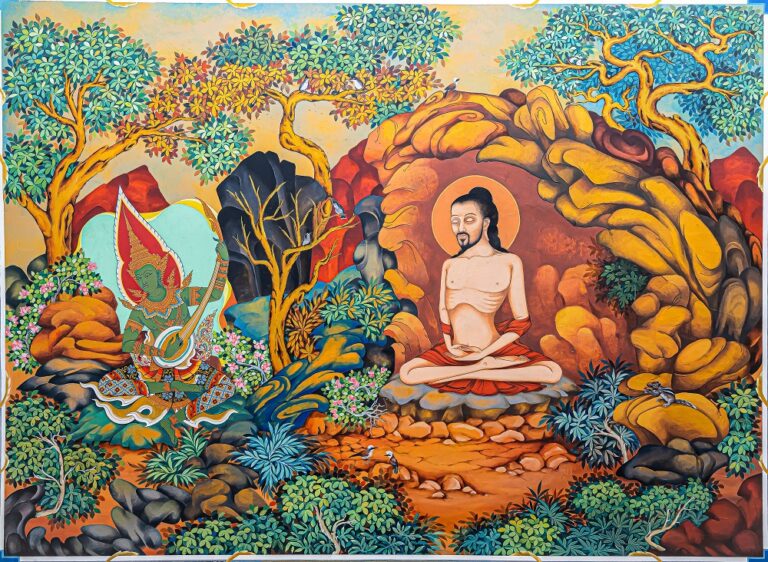
SELF-MORTIFICATION
In this mural, the future Buddha has embarked on a life of extreme asceticism. He is at Uruvela, and has chosen to undergo a great struggle in order to demonstrate to the gods and people that he is strong and worthy.
Siddhattha Gotama starves himself for six years, eating only one grain of rice or one sesame seed a day, or sometimes nothing at all. He becomes very thin, and his beautiful features disappear. He has no belongings and no comfort.
One day, he was attacked by violent pains, and collapsed to the ground. Some gods thought he was dead, and they told his father. King Suddhodana did not believe that his son would die before becoming the Buddha. Other deities told the king that his son was still alive, which he believed.
When Siddhattha Gotama regained consciousness, he realised that living in such harsh conditions was not the way to enlightenment. He saw that neither the laziness of his royal lifestyle nor the suffering of his ascetic lifestyle was the path.
Instead, he chose a path of moderation, which he called the Middle Path. He went begging through nearby villages for ordinary food, which he ate. He regained his health, and his skin began to glow again.
The deva musician in this mural plays the lute. The strings of the lute represent the three possible lifestyles. An indulgent life is like a loose string that plays a flat note. A harsh life is like a taut string that plays a sharp note. But the string that is neither too slack nor too tight produces a sweet tone, and this represents the Middle Path that leads to enlightenment.